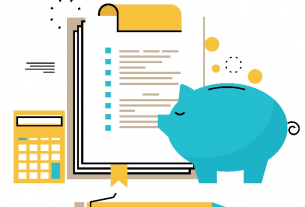The coming of the new year has traditionally been a time for people to make resolutions about how they’ll improve their way of living in the year ahead. It’s become famous in some circles to joke about those resolutions, and how few people stick to them. That’s particularly true when it comes to exercise and fitness.
But while many people may vow to exercise more, eat less, and get healthier, fewer people make resolutions to improve their financial health. That’s a mistake, because getting in good financial shape is just as important as getting in good physical shape.
Each new year offers a good opportunity for investors to reassess their financial goals, their financial status, and make the necessary changes they need to achieve their financial aims. It’s an exercise that every investor should perform at least once a year. With that in mind, here are five resolutions investors can make that will help improve their financial well-being.
1. Develop a Retirement Investment Plan
Many people save for retirement, but few have an actual plan for saving. That’s somewhat understandable, given the seeming ubiquity of workplace 401(k) investment programs. And with stock markets having gone on a hot streak for the past four years, many investors plow money into their 401(k)s, watch their balances go up, and figure that they’re in pretty good shape. But that’s not true.
Investors are so focused on watching their balances increase that they haven’t planned for what to do when their balances begin to decrease. That’s the first thing they need to plan for. But investors also need to establish a long-term plan for their retirement. Putting all your eggs into your 401(k) basket may look good while stocks are doing well, but how will your savings survive a down market?
The first part of developing a retirement investment plan is to set goals for yourself. How much money do you want to have 5, 10, 20 years down the road? How much money do you plan to withdraw each year? How much money will you need to invest now, and at what growth rate, to reach those goals? Start asking yourself those questions and eliminate any investments that don’t help you reach those goals.
2. Rethink the Way You Invest
With numerous changes coming to retirement accounts as a result of recent legislation passed by Congress, the retirement planning industry may get turned on its head. By far the biggest change to come out of that recent legislation is the elimination of “stretch” IRAs, which formerly allowed inheritors of IRAs to distribute funds over their lifetimes. Now any non-spouse who inherits an IRA must distribute those funds within 10 years.
Many analysts speculate that this new legal change will result in a wave of Roth IRA conversions, or at least partial conversions. That can come with a big tax hit, but the result is that a Roth IRA’s distributions are made tax-free at distribution time. If you have a non-Roth IRA, you may want to consult with your financial adviser and tax adviser to see if a Roth IRA conversion makes sense for you under the new laws.
3. Find More Ways to Save and Invest
No one ever reached retirement wishing that they had less money saved up. So why should you be any different? Now’s the time to assess your spending habits, your savings, and your investments so that you can figure out where you can add more to your savings.
It can be little things like forgoing that bar of chocolate at the grocery store, or bringing coffee in a thermos to work instead of heading to Starbucks. Eventually those little changes add up. If you can find an extra $100 a month to save, invest, and put to work for you, that could result in tens of thousands of additional dollars in your retirement portfolio by the time you retire.
4. Diversify Your Portfolio
Just as you don’t want to put the entirety of your savings in a 401(k) account, you also don’t want to put the entirety of your savings into any one class of investments. If you have 100% of your assets in stocks, you’re liable to take on huge losses during a stock market crash. If you have 100% of your assets in bonds, you’re likely to lose money when bond markets freeze up.
The ideal percentages to invest in each asset class are a personal decision that depend on your time horizon, risk appetite, and personal financial goals. And the exact makeup of your portfolio will and should fluctuate over time, as varying market conditions will necessitate varying types of investments.
One thing is certain, though. You don’t want to have all of your assets tied up in financial investments. Many investors may think that a mix of stocks and bonds is enough diversification, but both types of assets are tied to Wall Street. In the event of a financial crisis, both stocks and bonds will lose value. That’s why it’s so important to branch out into other asset classes, such as gold and precious metals, real estate, and commodities.
5. Protect Yourself Against Risk
Risk is unavoidable when it comes to investing, and every investor is going to suffer some losses. But the really successful investors are those who minimize their losses, especially when things get tough. While it’s nice to make big gains, if those are coupled with big losses on the other side, you may be better off sacrificing some of those big gains in the short term and investing in assets that won’t leave you liable to huge losses.
Gold is one of the best assets for doing that, especially over the long term. Since 1971 gold has outperformed stock markets, and the past 20 years have seen a remarkable bull run that has benefited numerous precious metals investors. It isn’t the only asset that can de-risk your investment portfolio, but its ability to hedge against risk and continue to help you make investment gains makes it one of a kind.
Hopefully these five resolutions help you re-evaluate your investments and improve your ability to build up your wealth in the future.
This article was originally posted on Goldco.




